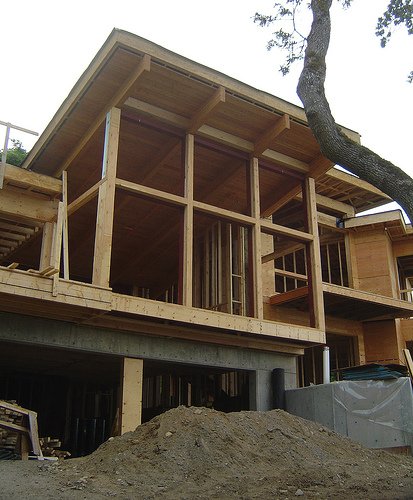March 21, 2016
New owners frequently struggle to timely resolve construction defect disputes with builders. For example, owners in Palm Beach Gardens, Florida have home workmanship complaints. Their HOA sued Kolter Homes, LLC for defects including lighting problems, window gaps, sloping balconies and water intrusion. On March 15, 2016, the Daily Business Review reported that Kolter began a new, larger development nearby before resolving their defects. Furious, the owners took to the streets to protest in front of the new project. Owners have rights to effective repairs under warranties arising out of the contract or law. When owners make warranty claims and builders send repair crews in response, these disputes are rarely resolved satisfactorily. The owner’s life is disrupted by living with the undesirable reality of the defects, communicating with the builder, and making arrangements for repairs that may not even be effective. For many owners the “playing field” seems unbalanced because the builder wrote the contract terms, knows the construction business, and has their money. How can owners break out of this cycle of frustrating customer service and get the house they initially bargained for? With smartphone cameras, it is easy for a buyer to record visible defects and the date they took the photographs. When calling and emailing isn’t enough, owners need more effective strategies for finding traction in construction defect claims against contractors.
Understanding Contractual & Warranty Rights. The sales process gives the buyer an understanding of what they will get for their money. New construction is an expensive consumer purchase. Builders know what consumers are looking to hear. Buyers usually make substantial financial sacrifices and commitments to purchase a property that they hope will fit their lifestyle and be a solid investment. Once they make the down payment, sign the contract and go to closing, the buyer’s bargaining position shifts. What builder promises, assurances and expectations can be legally enforced after they have been paid? Deceptive practices may lead to a consumer protection, fraud or even criminal prosecutorial action. However, for most owners the remedy for unfulfilled expectations lies in the contract and warranty commitments made by the builder. The owners can confirm what they bargained for by collecting and understanding the contract and warranty documents provided by the builder. This helps the owner to sort out sales talk from contract rights. Many of the documents may be organized into a packet provided when the parties went under contract or at closing. Other documents may be found elsewhere. For example, warranties, manuals, arbitration rules and other documents may be on file with the builder or available on its website. The contract may reference drawings that are on file with the city or county’s permitting office. If the documents are unclear on a particular point the owners or their attorney may have to consult building codes to understand their rights.
Mark Warranty Deadlines on the Calendar. The written warranties, contracts and state law will impose strict time limits on defect claims. Usually the builder is entitled to a written notice of a defect claim. For many warranties this must be done within a year. The owner usually has a subsequent deadline for submitting the claim to the court or arbitration. It is not really in the builder’s financial interest for the owner to focus on these deadlines. Just because the builder has actual knowledge of a defect does not preserve the claim absent legal notice requirements.
Obtain Reports for Defects & Estimates for Repairs. Once an owner knows the builder’s legal obligations, the next issue is diagnosing the defects and determining the cost to make it conform to the warranty. Owners making defect complaints to the builder have a strong sense of what is wrong from their day-to-day experience of living or working in the property. However, the defects may not be limited to what is immediately experienced by the senses. There may be latent defects that will require expensive repairs in a few years. Owners owe it to themselves to fully understand what is wrong and how much it would cost them to fix by a third party. After six to ten months of frustrating negotiations and ineffectual repairs, the owner may have lost confidence in the builder’s willingness or practical ability to make the repairs. The owner cannot effectively negotiate with the builder for a cash settlement without written assessments by experts that are independent from the builder. The needs of each case are different, and might require engineers, home inspectors, contractors or other qualified experts. At a minimum, the owner usually needs an experienced, licensed contractor. Strong communication skills are needed to handle cross-examination by builder’s counsel before a judge, jury or arbitrator. The written estimate must be for repair of the defects covered by the warranty and not simply projects that the estimator wants to sell and the owner wants to receive. A written estimate can confirm for the owner whether they have a $10,000.00 or $100,000.00 claim. It is in the owner’s best interests to find out the cost before any decisions must be made in light of warranty deadlines.
In construction disputes, the builder has some advantages. They prepared the contract and warranty documents with their lawyers before presenting them to the owners. The builder passed the contracting license exam and knows the building code requirements to get an occupancy permit. The builder negotiated defect complaints with customers before. But it is the owner who must live with or pay to repair construction defects that aren’t acceptably resolved in the warranty claim process. However, owners can level the playing field and obtain good results by determining the gaps between what was contracted for and the structure’s actual condition. A written estimate for defects covered by an unexpired warranty provides owners with what they need to obtain satisfactory results in litigation, arbitration or settlement negotiations. The builder has their own qualified legal and technical advisors working for them to deal with consumer complaints. Owners can level the playing field, gain traction in negotiations and make financial decisions with greater peace of mind by retaining their own counsel as soon as defect disputes arise, and before they become seemingly intractable.
Photo Credit: Pacific Northwest Architecture via photopin (license)


